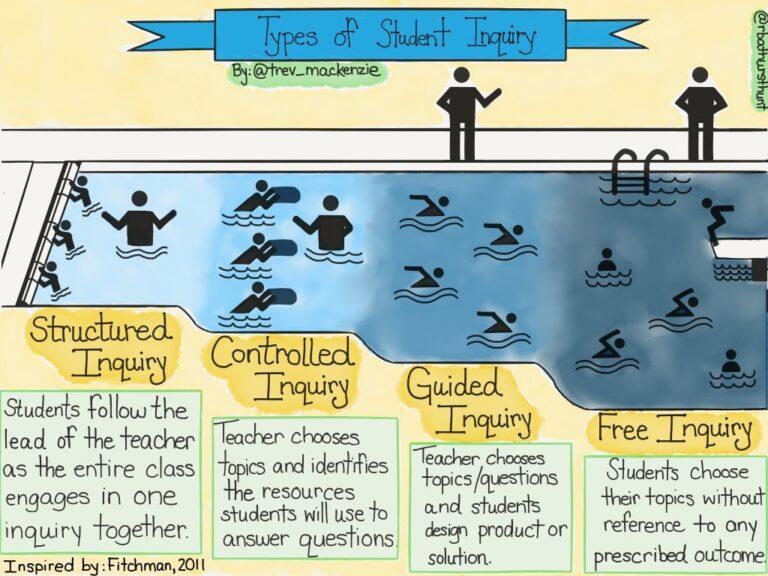
Meet Marisa Thompson
MARISA THOMPSON is a mom, wife, HS English teacher, professional development facilitator, instructor at the University of San Diego, traveler, and a liver of life. When people ask her what she does, she sums up her multiplicity of roles by simply saying “I’m in education,” and she wouldn’t have it any other way, she says.
Disillusioned by Education
When asked about a low moment, Marisa recalls her earliest visions of the kind of teacher she wanted to be. “So much of it came from Hollywood,” she says. But a few years in, she realized that she was not the teacher that she thought she wanted to be. By her seventh year, her disillusionment had grown to the point that she decided to leave the classroom entirely.
After a period of reflection and time away from the profession, she came across the idea of flexible seating on Pinterest. She pitched the concept to a principal, and his reaction took her by surprise.
“Great,” he said. “Go do it!” This yes was such an encouragement because it proved that her voice mattered and that her ideas could lead to transformative work. What followed was seven years of further growth and exploration.
Restoring the Joy of Reading with TQE
On July 10, 2018, Marisa published a blog post titled We’re Killing the Love of Reading, but Here’s an Easy Fix. In the post, she unpacks a method of student engagement with texts called the TQE Method: thoughts, questions and epiphanies.
When you first start trying the TQE Method in your classroom, there will be growing pains for you and the students at first, she warns. But they will go away. The more you use it, the more the practices will start to become comfortable, organic, and powerful. Your students will start to engage in the kind of rich discussions that we all remember having in university or grad school.
It’s about giving students the time, space, language, and culture to safely engage in the sharing of ideas like never before. The TQE Method is now appearing in classrooms at all levels and all subjects, and Marisa couldn’t be happier.
When it comes to feedback for students using the TQE Method, Marisa looks for quantity simply because participation is essential. But her assessment is based primarily on two things: reading comprehension and author’s purpose. Can students analyze a choice that an author made and describe how it helps an author accomplish their objective in a text? Students who can demonstrate these skills with consistency are demonstrating mastery.
On Fire for TED Talks
Something else that is setting Marisa on fire for education is her students’ recent TED Talks. They focused on communicating effectively with audiences, exploring concepts of happiness and success, and sharing authentically. Marisa watched as her students actually put aside rehearsed notes to speak from the heart, and the results were powerful. It was a first-class example of the link between vulnerability and compelling communication.
Projects and Pursuits
One of the things that Marisa is trying to do in her current classroom is to get away from class novels. Literary freedom works, and it’s good for kids, she says. On the other hand, shared conversations and connected experiences with texts are everything, so she’s looking at ways to combine both goals.
In her teacher support role, Marisa is focused on creating a series of 2-minute tutorials to help get teachers started with new initiatives, and at the Jacobs Institute for Innovation in Education at the University of San Diego she is busy designing new courses based on real-world experiences, like Disney World.
A Personal Passion Outside of Education: Travel
Marisa’s ultimate passion away from education is travel. Although she didn’t grow up in a wealthy home, she’s been traveling for as long as she can remember and has now visited at least 20 countries. She’s taken students to a number of those countries and always finds it a valuable learning experience to see other cultures and other places.
Voices and Resources That Inspire Marisa’s Practice
If you’re looking to follow someone new on Twitter, Marisa recommends @JuliaFliss. “The work that she does is soulful,” Marisa says. It’s big picture, everything-is-possible, and it’s filled with positivity and optimism. She is all about working with people and changing the world.
No edtech tool has been more helpful to Marisa this year than Pro Keys, a Google Chrome extension that allows you to build and customize your own feedback shortcuts. Marisa has used this tool to go from 160 hours to 4 hours of writing assessment completed at home this year thanks in large part to this tool.
It’s not easy for an English teacher to pick favorite books, but Marisa points to two classics in particular: East of Eden by John Steinbeck and Fahrenheit 451 by Ray Bradbury.
Follow Marisa
- On Twitter @MarisaEThompson
- On Instagram @Marisa.E.Thompson
- On her blog at http://unlimitedteacher.com
Connect with the Teachers on Fire podcast on social media
- On Twitter @TeachersOnFire
- On Instagram @TeachersOnFire
- On Facebook @TeachersOnFire
- On LinkedIn: Tim W. Cavey
- On The Teachers on Fire Magazine
- On YouTube: Teachers On Fire
Subscribe to the Teachers on Fire podcast
- On Apple Podcasts
- On Google Podcasts
- On Anchor
- On Spotify
Song Track Credits
- Bluntedsesh4 (by Tha Silent Partner, courtesy of FreeMusicArchive.org)
- Sunrise Drive by South London Hifi*
- Anthem by The Grand Affair*
*courtesy of the YouTube Audio Library
Listen to Teachers on Fire on YouTube
*This page contains Amazon affiliate links.







